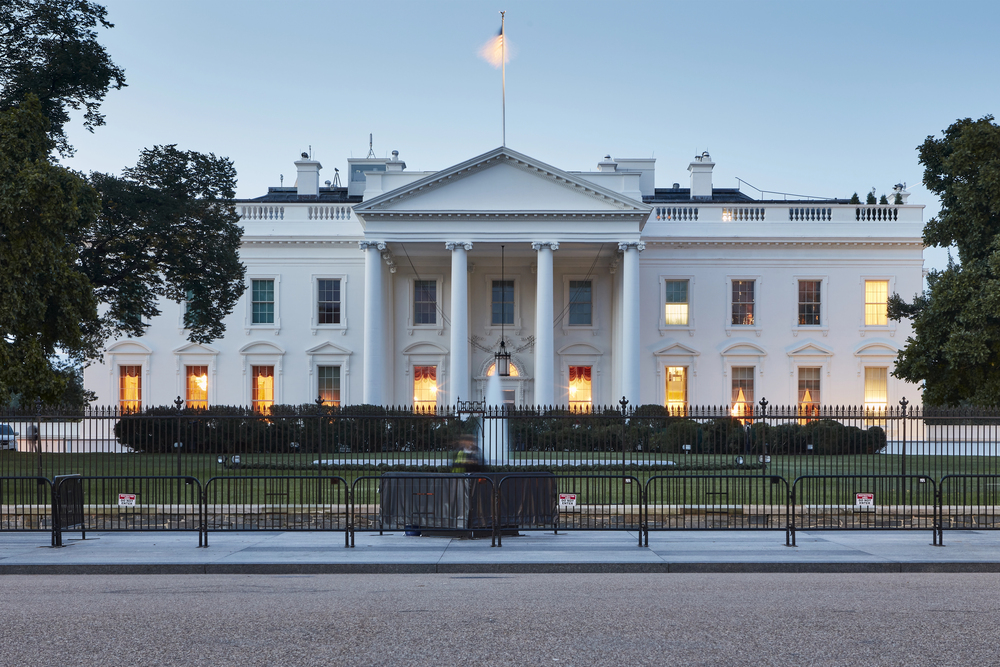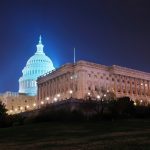Gerrymandering serves a clear and controversial purpose in American politics: to manipulate electoral outcomes by strategically drawing district boundaries. The primary purpose of gerrymandering is to give one political party an unfair advantage over its rivals by concentrating or dispersing voters in ways that maximize favorable election results. This practice fundamentally alters how votes translate into political representation.
Politicians engage in gerrymandering to create “safe” districts for their party while weakening opposition strongholds. The process involves either packing opposition voters into a few districts to limit their overall influence or cracking them across multiple districts to dilute their voting power. Both tactics serve the same goal: securing more seats in legislatures and Congress than would occur under fair district maps.
The stakes of gerrymandering extend far beyond individual elections, shaping policy decisions and democratic representation for entire decades. Understanding how this process works, its historical development, and the ongoing legal battles surrounding it reveals why gerrymandering remains one of the most contentious issues in American democracy today.
Defining Gerrymandering and Its Primary Purpose
Gerrymandering represents the deliberate manipulation of electoral district boundaries to create political advantages for specific parties or groups. This practice employs strategic techniques like cracking and packing to influence election outcomes and concentrate or dilute voting power across different communities.
Manipulation of District Boundaries for Political Gain
Political gerrymandering involves redrawing electoral district lines to give one party an unfair advantage over its competitors. The party controlling the redistricting process can engineer maps that virtually guarantee electoral outcomes before voters cast their ballots.
This manipulation occurs during redistricting cycles, typically every ten years following the U.S. Census. Map drawers use detailed voter data and computer algorithms to create districts with surgical precision.
The primary goal focuses on maximizing supporters’ votes while minimizing opponents’ electoral influence. Politicians essentially choose their voters instead of voters choosing their representatives.
Modern gerrymandering has become more sophisticated due to advanced technology and detailed demographic data. Computer-generated maps allow drawers to evaluate thousands of potential configurations rather than relying on hand-drawn alternatives.
The 2019 Supreme Court ruling in Rucho v. Common Cause declared partisan gerrymandering a “political question” beyond federal court jurisdiction. This decision removed a major constraint on aggressive redistricting practices.
Types of Gerrymandering: Partisan and Racial
Partisan gerrymandering aims to favor one political party while weakening another’s electoral prospects. Republicans and Democrats both engage in this practice when they control state redistricting processes.
The 2024 election maps demonstrated partisan gerrymandering’s impact. Republican-controlled states created approximately 16 fewer Democratic-leaning districts compared to neutral redistricting standards.
Illinois exemplifies Democratic gerrymandering, where the party reduced Republican seats to just 3 of 17 congressional districts. Fair redistricting would likely produce around 6 GOP seats in the state.
Racial gerrymandering targets the voting power of ethnic and linguistic minority communities. This practice often intersects with partisan gerrymandering, particularly in southern states with racially polarized voting patterns.
Communities of color face disproportionate impacts from gerrymandering due to residential segregation patterns. Map drawers can efficiently target these communities to achieve broader partisan objectives.
The Supreme Court’s Rucho decision complicated racial gerrymandering challenges. States can now defend discriminatory maps by claiming partisan rather than racial motivations for their boundary decisions.
Key Concepts: Cracking and Packing
Cracking splits groups of opposition voters across multiple districts to dilute their electoral strength. These divided groups become too small within each district to elect their preferred candidates effectively.
The technique spreads concentrated voting blocs into several districts where they form minorities. Cracked communities struggle to achieve meaningful representation despite their overall numbers.
Packing concentrates opposition voters into as few districts as possible to limit their influence elsewhere. Packed groups win their districts by overwhelming margins while losing power in surrounding areas.
Both cracking and packing can operate simultaneously within the same redistricting plan. Map drawers combine these techniques to maximize their partisan advantage across an entire state.
District shapes do not always reveal gerrymandering. Smart gerrymanderers create normal-looking districts that still achieve cracking and packing effects through careful voter sorting.
North Carolina’s current congressional map appears geometrically reasonable yet virtually guarantees Republicans 10 of 14 seats. This result contradicts the state’s competitive political nature and regular Democratic statewide victories.
Redistricting Process and the Role of the Census
The U.S. Constitution mandates a decennial census that triggers congressional reapportionment, followed by state-level redistricting of electoral districts and state legislative districts. This process determines how voting districts are redrawn and who controls the line-drawing authority.
How Redistricting Follows the Census
The Constitution requires a population count every 10 years to reapportion the 435 House of Representatives seats among states. The Census Bureau reports population data to Congress, which then determines how many congressional seats each state receives based on population changes.
States must redraw their electoral districts after receiving census data to create districts with roughly equal populations. The Census Bureau aims to deliver detailed population data to states by April 1 following the census year.
Key redistricting requirements include:
- Equal population distribution across districts
- Compliance with the Voting Rights Act
- Contiguity of district boundaries
- Compactness where feasible
Some states redraw maps between census cycles through mid-decade redistricting. Texas redistricted in 2003 despite having enacted maps after the 2000 census. The Supreme Court upheld this practice in LULAC v Perry (2006).
Changes in Electoral Districts and State Legislative Districts
Redistricting affects both congressional districts and state legislative districts. States redraw boundaries for House seats, state senate districts, and state assembly districts based on new population data.
Population shifts between census cycles create districts with unequal representation. Growing areas become underrepresented while declining areas become overrepresented. The Supreme Court established the “one person, one vote” principle in Reynolds v. Sims (1964).
Districts must maintain several criteria:
- Contiguity: All parts physically connected
- Equal population: Similar numbers of constituents
- Compactness: Avoiding irregular shapes
- Communities of interest: Keeping related groups together
State legislative districts follow similar principles but may have different population tolerances than congressional districts. Some states must create majority-minority districts under the Voting Rights Act.
Redistricting Authorities and Independent Commissions
Most states assign redistricting responsibility to their legislatures through the standard lawmaking process. State legislators draw both congressional and state legislative district maps, often subject to gubernatorial approval or veto.
Several states use independent commissions to reduce partisan influence in redistricting. These commissions exclude current officeholders and consist of citizen appointees. California, Arizona, and Colorado use citizen commissions for congressional redistricting.
Types of redistricting authorities:
- Legislative control: Majority of states
- Independent commissions: Growing number of states
- Advisory commissions: Iowa and Maine
- Backup commissions: Connecticut and Texas
- Hybrid systems: New York and Virginia
Courts serve as backup authorities when legislatures or commissions cannot agree on maps by state deadlines. Federal and state courts also review maps for constitutional compliance and potential gerrymandering violations.
Some states explicitly prohibit partisan gerrymandering in their constitutions or statutes. State courts in these jurisdictions can strike down maps deemed excessively partisan.
Impacts on Voting Rights and Representation
Gerrymandering fundamentally alters how votes translate into political representation by manipulating district boundaries to favor specific parties or groups. This practice creates systematic barriers that prevent equal representation and concentrates political power in ways that contradict democratic principles.
Dilution of Voting Power
Gerrymandering weakens individual votes through two primary methods: cracking and packing. Cracking splits concentrated voter groups across multiple districts, making their votes less effective in any single race. Packing concentrates opposition voters into few districts where they win by large margins but lose influence elsewhere.
These techniques prevent votes from carrying equal weight across districts. A voter in a packed district may see their preferred candidate win with 80% of the vote, while their excess support could have influenced races in other areas. Meanwhile, cracked voters find themselves as permanent minorities in multiple districts.
The 2022 North Carolina elections demonstrated this effect clearly. Court-appointed maps produced equal Democratic and Republican representation. After new gerrymandered maps took effect in 2024, three Democratic districts flipped Republican, giving the GOP disproportionate control despite similar statewide vote totals.
Barriers to Fair Representation
Gerrymandering creates structural obstacles that prevent communities from electing representatives who reflect their interests and values. Politicians choose their voters instead of voters choosing their politicians through carefully drawn boundaries that predetermine election outcomes.
Communities of color face particularly severe barriers. Residential segregation patterns make these populations easy targets for manipulation. Map drawers can crack minority neighborhoods across multiple districts or pack them into single districts to minimize their overall representation in government.
The Supreme Court’s 2019 Rucho v. Common Cause decision removed federal court oversight of partisan gerrymandering. This ruling allows states to defend racially discriminatory maps by claiming partisan rather than racial motivations, as seen in South Carolina’s coastal district case.
Single-party control of redistricting amplifies these barriers. When one party controls the entire process, transparency disappears and partisan concerns override fair representation. This system produces maps where electoral outcomes become virtually guaranteed regardless of voter preference shifts.
Effects on Political Power Balance
Gerrymandering shifts political power away from competitive elections toward predetermined outcomes that favor map drawers. After the 2020 census, Republicans controlled redistricting in more states than Democrats and used this advantage aggressively across multiple states.
Current congressional maps show significant power imbalances. The Brennan Center estimates that 2024 election maps contained 16 fewer Democratic-leaning districts compared to maps following strong anti-gerrymandering standards. Texas and Florida maps show particularly severe skewing effects.
Illinois provides an example of Democratic gerrymandering power. The state’s redrawn congressional map reduced Republican seats to just 3 of 17 total seats, the lowest number since the Civil War. Fair mapping estimates suggest Republicans should hold approximately 6 seats based on statewide voting patterns.
This power concentration affects government composition at both state and federal levels. Gerrymandered maps can allow parties to maintain legislative control even when receiving fewer total votes, fundamentally altering policy outcomes and representative government function.
Historical Origins and Notable Examples
Gerrymandering emerged from early American political maneuvering, with Massachusetts Governor Elbridge Gerry giving the practice its distinctive name in 1812. Major Supreme Court cases and state-level redistricting battles have since shaped the legal framework around electoral district manipulation.
Origin of the Term and Elbridge Gerry
The term “gerrymandering” combines Governor Elbridge Gerry’s surname with “salamander,” referencing the peculiar shape of Massachusetts redistricting maps from 1812. Gerry’s administration redrew state senatorial districts to consolidate Federalist Party votes into fewer areas while spreading Democratic-Republican voters across multiple districts.
This redistricting gave Democratic-Republicans disproportionate representation in the state legislature. Elkanah Tisdale created a famous political cartoon in the Boston Gazette that transformed one of these oddly-shaped districts into a monster-like creature.
The cartoon depicted the district as “The Gerry-mander,” with claws, wings, and a serpentine body. This satirical image fixed the term permanently in American political vocabulary.
Gerrymandering existed in America before Gerry’s time, but his name became forever linked with the practice. The 1812 Massachusetts redistricting represented one of the first well-documented examples of systematic electoral manipulation in the United States.
Significant Historical Gerrymandering Cases
Several landmark Supreme Court cases established legal precedents for addressing gerrymandering. Baker v. Carr (1962) determined that redistricting disputes could be heard in federal courts, rejecting the previous stance that these were purely political matters.
The Court established the “one person, one vote” principle in Gray v. Sanders (1963). Wesberry v. Sanders (1964) required congressional districts to contain roughly equal populations.
Thornburg v. Gingles (1986) addressed racial gerrymandering, ruling that such practices violated the 1965 Voting Rights Act. The decision prohibited electoral standards that reduced minority groups’ opportunities to elect preferred representatives.
Rucho v. Common Cause (2019) marked a significant shift when the Supreme Court declared partisan gerrymandering beyond federal court jurisdiction. The 5-4 decision classified these disputes as “political questions” that courts cannot resolve.
Illinois provides a contemporary example where both major parties have employed gerrymandering when controlling the redistricting process. The current Democratic-drawn map ranks among the most effective partisan gerrymanders nationally.
Legal Landscape and Court Decisions
The legal framework surrounding gerrymandering has evolved through decades of Supreme Court decisions that distinguish between racial and partisan redistricting practices. Federal courts maintain authority over racial gerrymandering while partisan gerrymandering remains largely outside judicial oversight.
Supreme Court Rulings on Gerrymandering
The Supreme Court has established two distinct legal pathways for gerrymandering cases. Racial gerrymandering faces strict constitutional scrutiny under the Equal Protection Clause.
Partisan gerrymandering receives different treatment entirely. The Court ruled in 2019 that partisan gerrymandering claims present political questions beyond federal judicial reach.
This creates a legal divide where race-based redistricting violations can trigger court intervention. Political party-based redistricting faces no such federal constraints.
The Court’s decisions have enabled more aggressive partisan map-drawing. State legislators can now defend racially discriminatory maps by claiming partisan rather than racial motivations.
South Carolina’s coastal district exemplifies this approach. Legislators removed Black voters from Nancy Mace’s district but defended the action as partisan strategy rather than racial targeting.
Role of Federal Courts and the Voting Rights Act
Federal courts retain jurisdiction over redistricting cases involving racial discrimination. The Voting Rights Act prohibits drawing maps that dilute minority voting power.
Courts can strike down maps that violate constitutional protections for racial minorities. They can order new maps or impose court-drawn alternatives.
The Voting Rights Act requires certain jurisdictions to demonstrate that redistricting changes don’t harm minority voters. However, recent Supreme Court decisions have weakened these protections.
Federal courts face limitations when racial and partisan motivations overlap. Proving racial intent becomes difficult when legislators claim partisan purposes.
State courts have emerged as alternative venues for challenging gerrymandered maps. Some state constitutions provide stronger anti-gerrymandering protections than federal law.
Landmark Cases: Rucho v. Common Cause and Beyond
Rucho v. Common Cause (2019) represents the most significant gerrymandering decision in recent decades. The Court declared partisan gerrymandering claims non-justiciable in federal courts.
Chief Justice Roberts wrote that while gerrymandering contradicts democratic principles, federal courts lack standards to evaluate political fairness. The decision effectively removed federal judicial oversight of partisan redistricting.
The ruling built upon LULAC v. Perry, which permitted mid-decade redistricting for partisan advantage. These decisions created the current legal environment where partisan gerrymandering faces minimal federal constraints.
Baker v. Carr (1962) established federal court jurisdiction over redistricting disputes. This earlier case opened courthouse doors to redistricting challenges but focused on population equality rather than partisan fairness.
The legal precedents from these cases shape current redistricting practices. Map drawers can pursue aggressive partisan strategies while claiming compliance with population and racial requirements.
State supreme courts have stepped into the gap left by federal court withdrawal. North Carolina’s supreme court initially blocked partisan gerrymandering before reversing course after compositional changes.





